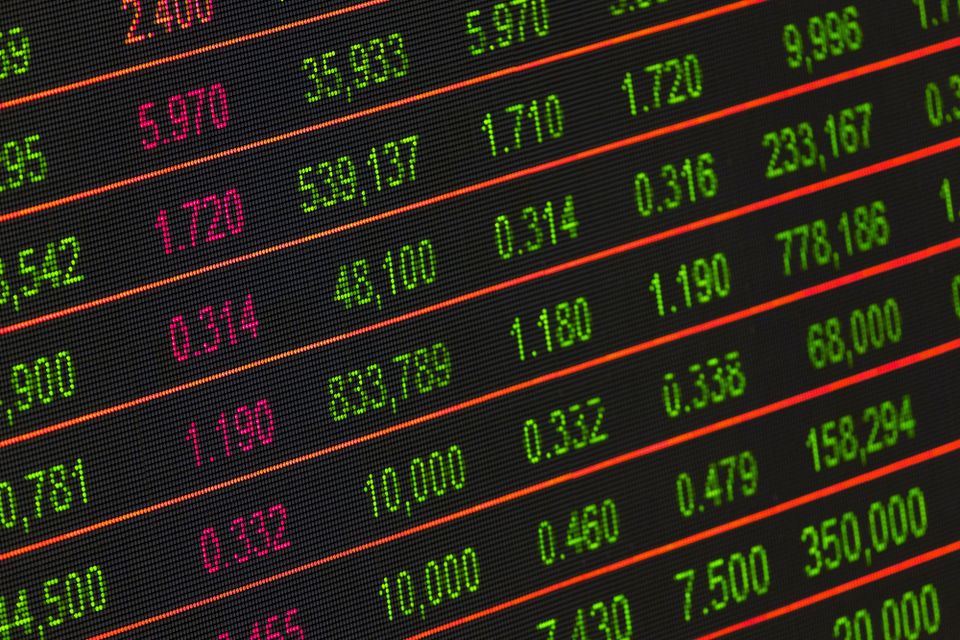The Investing Machine

Investing—especially in stocks—is the most central tenet of modern capitalism and, therefore, of American society. From our billionaires to our politicians to our middle-class families, everyone invests. You put your money in the magic machine and it grows overtime, like a savings account on steroids. Sure, there will be hiccups along the way, but as long as you don’t desperately need to withdraw money, you can simply ride the waves and wait it out. Investing is like a casino with the odds stacked in your favor: If you invest enough money for long enough, your odds of making gains are near impeccable. If you’re an investor, like me, it almost seems silly to do anything else with your money! But when something seems so given, so unshakably infallible, that is exactly when a deeper analysis is most crucial. Investing is more than just a way to make some extra cash: It’s a self-feeding system and the all-consuming engine of American society.

Who the hell doesn’t invest? Well, those who can’t afford it, and that’s about it. Just over half of adult Americans own stocks, but a whopping 89% of households making six figures or more annually do (Gallup). The affordability (or lack thereof) of benefiting from capitalism is a beast of its own and deserves its own exploration, so I’m going to omit that discussion from here. Instead, let’s focus on that 89%. Essentially, those with disposable income invest it, either by owning shares directly, by abstracting them away behind ETFs, or by letting their financial advisor buy stocks for them. Additionally, those who own stocks own more of them than ever. Classic, conservative investment allocation strategies—like determining the percentage of your portfolio to put in stocks by subtracting your age from 100—have fallen by the wayside, replaced by more aggressive ones. Vanguard’s Retirement Target 2035 fund holds 80% stocks, 1.6 times the traditional suggestion for 50 year-olds! The reality is, other asset classes just can’t keep up with stock performance, and stocks aren’t seen as the risk they once were. This transition has been gradually taking place over decades—with temporary setbacks in the 2 crashes of the early and late 2000s—but the pace of the shift has recently accelerated. Investors’ confidence that “no crash is permanent” is stronger than ever after Covid’s “shortest market crash in history” (see Japan’s 50-year market chart to prove this confidence wrong). Stocks are king, and with Social Security in dire straits, Americans are more dependent on them than ever for a secure retirement, making stock performance absolutely crucial for the middle class’ financial future. Investors, though, aren’t the only ones relying more heavily on stocks: Businesses are, too.
Who the hell still takes out corporate debt? Well, large, mature companies, and that’s about it. Long gone are the days of convincing your bank to give you a loan to start a business, at least if you have aspirations of being more than a mom and pop shop. Angel investors are chomping at the bit to fund every small team with a dream, so why take on scary, risky loans when you can sell a stake in your month-old company instead? If you fail, no worries, it’s all part of your angel investor’s risk portfolio because only one big win out of a dozen or more seed startups is needed for a successful year. Yeah, this is only private equity, not public shares, but it sets the foundation for how these companies operate well into their post-IPO lives. Famously unprofitable businesses like Uber have perfectly healthy balance sheets, while some like Snowflake have practically no debt at all. If you are a CEO in need of capital, just sell, sell, sell more shares. Who cares about shareholder dilution when you’re growing revenue 50% annually? As long as your company performs, its stock will float like a balloon, no matter how many shares you add to the market. The fact is, the stock market is a huge fundraising vehicle for businesses, sometimes for years after IPO, making it as crucial to companies as it is to individuals.
So, if the performance of stocks is critical to most Americans and to many growing American businesses, what sort of society does that create? Well, bluntly, it creates one in which stocks are everything. It creates one in which companies do everything in their power to increase the value of their shares. It creates one in which citizens cheer on big business because it is their only hope of retirement. It creates one in which the effectiveness of Presidents is in part determined by market performance. It creates one in which our leaders work diligently to keep the market afloat. Market performance is often portrayed as this murky, ambiguous thing, either as a totally opaque, near-random slot machine or as a semi-accurate representation of the health of the economy. Well, maybe that latter view was shattered during Covid. Ultimately, these statements are half-truths: They don’t distill the market to its core. Stocks go up when more money is going into the market than is coming out of the market, period. Sure, that scenario most often occurs during economic growth, but it does not have to. So, if the government wishes for stocks to go up, they must create an environment in which it is highly likely that the net flow of money into the stock market is positive. For example, they could keep interest rates at record lows, ensuring other investment vehicles have comically low yields, making stocks (and real estate) the only viable investment options. Or they could regularly lower the corporate tax rate over a period of 70 years, propping up share valuations. Maybe they could even print cash to buy corporate bonds to pump capital directly into businesses. Well, since all those have already been done, the only step the government has left to take is to buy company shares directly and make our corporatocracy official.
With or without the help of government aid, stock market performance still depends on investors deciding to put in more capital. Short-term traders aside, long-term investors will often point to valuation metrics to determine when to invest in or divest from individual companies or the market as a whole. P/E ratios, P/S ratios, PEG ratios, the Rule of 40, the Buffett Indicator, and on and on are listed by investors attempting to operate empirically. But against what are these numbers being compared to determine whether a stock or the market is undervalued? It is always compared against peer stocks or against history, that’s it! There is no absolute value in modern investing, only relative value! This industry tends towards such-and-such P/E ratio, and that industry tends towards such-and-such P/S ratio, and the market shouldn’t exceed such-and-such Buffett Indicator—all that is just consensus and relies on everybody else simply agreeing. Once upon a time, absolute stock values could be roughly deduced using dividend valuation models because dividends provide concrete, monetary value to shareholders. Of course, the power of market growth has reduced dividends to an afterthought, with share price taking center stage. In theory, this is because a growing company has the ability to pay even bigger dividends in the future, but our tech megacaps sit on hundred-billion-dollar piles of cash and still don’t spare a cent to their investors, and nobody bats an eye! And don’t get me started on voting rights—the only other supposed concrete value of owning a stock. Companies have long since destroyed investors’ voting rights by dividing their shares into classes which have different numbers of votes per share and then only making the weaker shares available to the public. With dividends and voting rights thoroughly demolished, the modern stock market is a structure built solely on the belief that more investors will put in more cash so that stocks will go up, with absolutely no regard for the real value of the underlying assets. Hm, investments based on more money always coming in? Sound familiar?
We have taken the most central piece of our financial future and thrown its concrete valuations to the wayside in favor of a speculative, sentiment-driven model. Surely, we can’t abstract our livelihoods away any more than that, right? Well, then automation came along. Why make decisions yourself when a robot can do it? In fact, today, 60% of stocks are held in automated, passive funds, and over 50% of all trade volume is conducted by high frequency trading bots (Investopedia). Now, I’m not saying these bots are any more or less safe—or more or less effective—than human investors, but what I am saying is that we are in the process of giving up the last bit of control we had over a market which practically determines the material quality of our futures. Still think humans run the world?
Conclusion
The stock market is the biggest, most crucial, scariest engine of American society. Its consensus value far exceeds its real value—that of voting rights and dividends—it is only propped up by its net positive cash influx, and it is slowly being taken over by robots. So am I selling? Hell no! The system may be irrational and complicated and beyond human control, but that is exactly what makes it the most powerful cybernetic network in history. After all, what other option do we have? Soak up that juicy 1% interest in a savings account? Forget about it.



